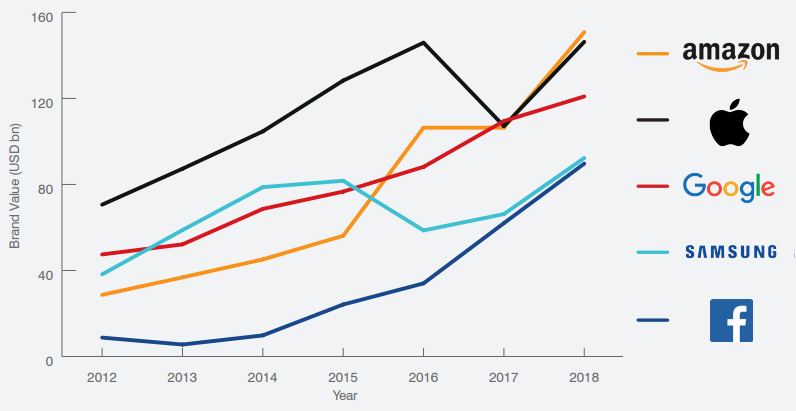 Crnogorski
Crnogorski English available languages
English available languages
The top of the 2017 Most valuable brand list was dominated by U.S. brands like Google, Amazon, Facebook, Visa, AT&T, and McDonald’s, but only one non-American brand (China’s Tencent) was able to crack the top 10 list. However, there was some changes in 2018 list.
This infographic comes to us from HowMuch, and it helps to make the international brand value picture a lot clearer. Using updated rankings from Brand Finance’s Global 500 Report, it shows the top brand for each country in 2018. However, there are many countries that are not represented here, as they do not have a brand large enough to make the top 500 list.

A STEEP DROPOFF
Keeping the aforementioned U.S. dominance of brands in mind, there is a pretty steep drop from the U.S. to other countries on the map. After retail giant Amazon, which ranks as the world’s top brand at $150.8 billion, the next biggest brand in any other country is Samsung (South Korea) at $92.3 billion.
From there, it’s another big fall to get to the next tier, which includes China’s ICBC ($59.2 billion), Germany’s Mercedes-Benz ($43.9 billion), Japan’s Toyota ($43.7 billion), and Royal Dutch Shell ($39.4 billion).
After that, the remaining brands on the list are in the $4 billion to $25 billion range, including well-known names like Nestlé ($19.4 billion), Zara ($17.5 billion), and RBC ($13.8 billion). While small compared to Amazon, these are still mostly large international or national brands.
WHY IS AMAZON SO DOMINANT?
As Amazon continues to rapidly scale its revenue, and as the Jeff Bezos Empire expands, we are all now very familiar with the online retailer’s dominance. That said, while Amazon appears massive on the map, it actually only just edged out Apple as the most dominant brand overall. Further, because Apple is also based in the U.S., the iconic tech company doesn’t have its logo appear on the map itself.
Here’s a look at how brand value for the top five brands has changed over time:

According to Brand Finance, the value of Amazon’s brand increased by 42% between 2017 and 2018. Here’s what Brand Finance CEO, David Haigh, had to say about the future of Amazon’s brand:
“The strength and value of the Amazon brand gives it stakeholder permission to extend relentlessly into new sectors and geographies. All evidence suggests that the amazing Amazon brand is going to continue growing indefinitely and exponentially.” –
– David Haigh, CEO of Brand Finance
Interestingly, the report authors also offer up reasons for Apple and Google getting “left behind”.
For Apple, an over-dependency on the iPhone limits the brand’s growth opportunities, while Google’s investments outside of search are unable to offer the scale, impact, or audacity demonstrated by Amazon’s ventures.
Just to note…
Understandably, there is often some confusion behind the definition of “brand value”. Not to be confused with market capitalization or enterprise value, brand value is defined as a marketing-related intangible asset that generates economic benefits for a brand within a company. In other words, this is the value of the image of the brand itself, as represented in the minds of stakeholders.
 Crnogorski
Crnogorski English available languages
English available languages
